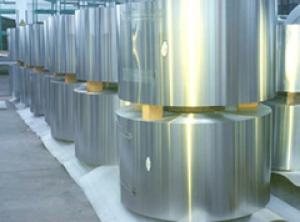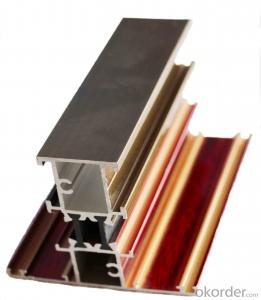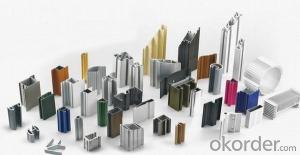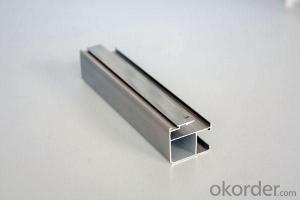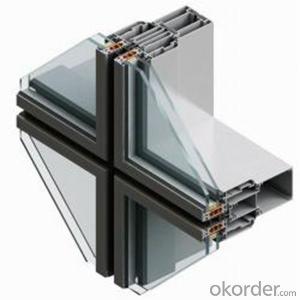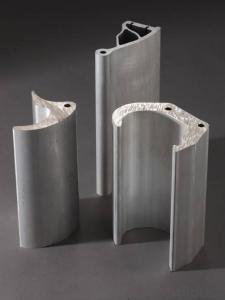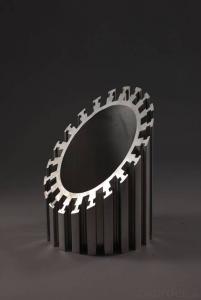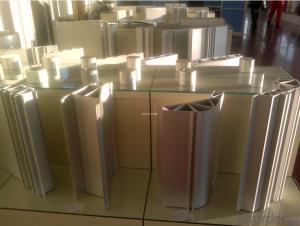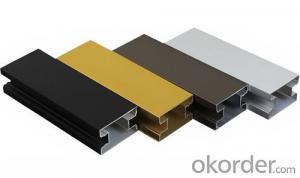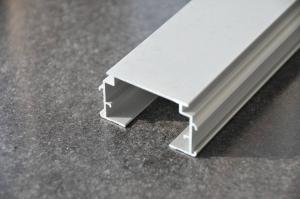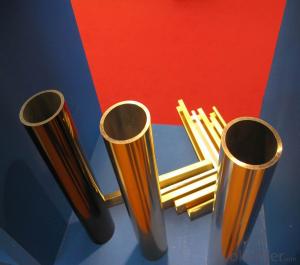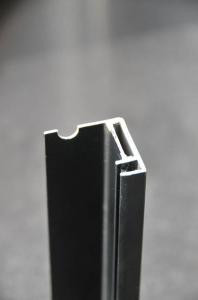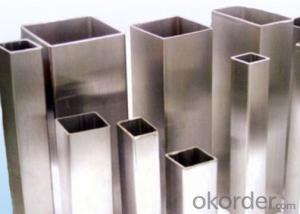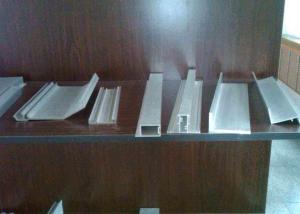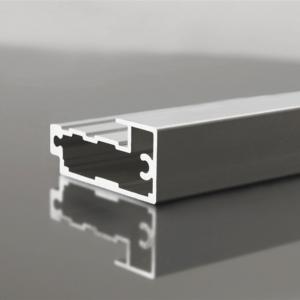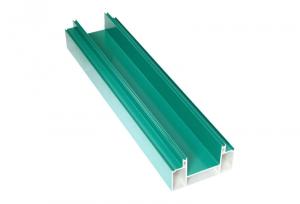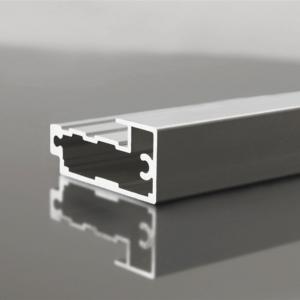Aluminum Tube Profiles for Electronics
- Loading Port:
- China Main Port
- Payment Terms:
- TT OR LC
- Min Order Qty:
- -
- Supply Capability:
- -
OKorder Service Pledge
OKorder Financial Service
You Might Also Like
It mainly consists of those for electric home appliances series, electronics series and electric power series. The aluminum products for electronic industry remain with the high-tech content products; in the middle term of 1990s, the high, medium, low voltage of anode foils & cathode foils entirely rely on the import, consequently it generated a severe influence on competitiveness of the industry, SWA put a great deal of efforts in manpower and material resources to carry out developing and marketing successfully at the end of 1990s, which acquired affirmative comments. The products are applied specifically for buses, stringing, conductors, electrical elements, refrigerators, air-conditioners, cables etc.
Aluminum foil produced by SWA for air-conditioner has good property of deep drawing with high strength and elongation, which has reached the standard of similar imported products.
The Al foil for high performance electrolytic capacitor has been filling a vacancy domestically in China, the integrated quality of products have been approaching or reaching to the world advanced level of similar products.
The Al foils for electrolytic capacitor (1997), the aluminum foil for radiating of air-conditioner (2001) are entitled as “Famous Brand Product of Chongqing”.
- Q: This question asks for a description of the various forms and dimensions of aluminum profiles that are typically utilized in the construction industry.
- <p>Aluminum profiles used in construction come in various shapes and sizes to cater to different structural needs. Common shapes include angles, channels, I-beams, H-beams, T-profiles, and rectangular or square tubes. Sizes vary based on the thickness of the aluminum and the dimensions of the profile, such as width, height, and length. For instance, an H-beam might have a depth ranging from 100mm to 900mm and a width from 50mm to 300mm. The selection of the right profile depends on the specific requirements of the construction project, such as load-bearing capacity, aesthetic considerations, and cost efficiency.</p>
- Q: What are the standards and regulations that control the use of aluminum profiles in construction?
- <p>Yes, there are several standards and regulations that govern the use of aluminum profiles in construction. These include international standards such as ISO 7039 and ISO 8039, which specify requirements for aluminum alloy extruded profiles. In the United States, the American Architectural Manufacturers Association (AAMA) provides guidelines, and the Aluminum Association sets standards for aluminum products. European standards like EN 755 and EN 12206 cover aluminum extrusions for general purposes and structural applications. Compliance with these standards ensures the safety, durability, and performance of aluminum profiles in construction projects.</p>
- Q: Can aluminum profiles be recycled and reused for interior wall cladding purposes?
- <p>Yes, aluminum profiles can be recycled and reused in interior wall cladding applications. Aluminum is a highly recyclable material, and its recycling process does not degrade its properties, making it an excellent choice for sustainable construction. Recycled aluminum profiles can be used to create new wall cladding systems, reducing waste and the environmental impact of mining and processing new aluminum. This practice not only conserves natural resources but also contributes to energy savings and a lower carbon footprint.</p>
- Q: This question asks for an explanation of various methods used to manufacture aluminum profiles, which are long, extruded shapes made from aluminum.
- <p>Aluminum profiles are manufactured using several processes, primarily extrusion, but also including casting, rolling, and machining. Extrusion is the most common method, where aluminum is heated and forced through a die to create a desired shape. Casting involves pouring molten aluminum into molds to form specific profiles. Rolling is used to produce flat sheets or plates, which can then be further processed. Machining involves cutting and shaping aluminum using tools like lathes and mills. Other processes include forging, which deforms aluminum under high pressure, and powder metallurgy, where aluminum powder is compacted and sintered into a solid profile. Each process has its advantages and is chosen based on the desired profile shape, strength, and application.</p>
- Q: Can aluminum profiles be used for swimming pool covers?
- Indeed, swimming pool covers can indeed utilize aluminum profiles. Aluminum, being both lightweight and long-lasting, is impervious to corrosion and can endure exposure to water and a range of weather conditions. Aluminum profiles can be employed to build the structure of swimming pool covers, granting them stability and reinforcement. Moreover, they can be used to fabricate sliding or folding mechanisms, allowing for effortless opening and closing of the covers. Furthermore, these aluminum profiles can be enhanced in terms of appearance and safeguarded against corrosion through powder coating or anodization. In summary, owing to their robustness, endurance, and adaptability, aluminum profiles are widely favored when it comes to swimming pool covers.
- Q: Can aluminum profiles be used in the production of packaging materials?
- Yes, aluminum profiles can be used in the production of packaging materials. Aluminum profiles offer several advantages for packaging, including lightweight and corrosion resistance properties. They can be shaped and formed into different packaging components, such as cans, tubes, foils, and containers, making them suitable for various industries, including food, beverages, pharmaceuticals, and cosmetics. Additionally, aluminum profiles provide a barrier against light, moisture, and oxygen, ensuring the quality and freshness of the packaged products.
- Q: How can I distinguish the aluminum profiles in the building and the aluminum in the industry?
- Door frames, aluminum profiles and doors and windows, aluminum profiles are in the building. Your picture is a line of scaffold material, usually in industrial material.
- Q: What are the different surface sandblasting options for aluminum profiles?
- There are several surface sandblasting options available for aluminum profiles, each providing a unique finish and level of abrasiveness. 1. Fine sandblasting: This option involves using fine-grain sand or abrasive materials to gently remove surface imperfections and create a smooth finish on the aluminum profile. It is commonly used when a polished or satin appearance is desired. 2. Coarse sandblasting: Coarse sandblasting utilizes larger-grain sand or abrasive materials to provide a more rugged texture on the aluminum surface. This option is often chosen to create a matte or textured finish, which can help to hide scratches or other blemishes. 3. Glass bead blasting: In this method, small glass beads are propelled at high speed onto the aluminum profile's surface. This process is typically used to achieve a uniform and aesthetically pleasing matte finish. Glass bead blasting is also commonly employed when a certain level of reflectivity is desired. 4. Walnut shell blasting: This option involves using ground walnut shells as the blasting media. Walnut shell blasting is a more gentle technique compared to sandblasting, making it suitable for delicate aluminum profiles. It can effectively remove contaminants and provide a clean, smooth finish. 5. Shot peening: Shot peening is a specialized sandblasting process that involves bombarding the aluminum profile with small metal shots or pellets. This technique is primarily utilized to increase the strength and resistance to fatigue of the aluminum surface, rather than altering its appearance. It is important to consider the specific requirements and desired outcome when choosing a surface sandblasting option for aluminum profiles. Consulting with professionals in the field can help determine the most suitable method based on the desired finish, level of abrasiveness, and the aluminum profile's properties.
- Q: Aluminum extrusion die, what material is better? Can reach long life, extruded products surface smooth and smooth?
- Agree with the upstairs view, the surface of the product is smooth or not, and extrusion process has a lot to do with the flatness of the work belt
- Q: Are aluminum profiles suitable for use in flooring systems?
- <p>Yes, aluminum profiles can be used for flooring systems. They are known for their strength, durability, and resistance to corrosion, making them ideal for various flooring applications. Aluminum profiles can be used to create modular flooring systems, providing a lightweight and easy-to-install solution. They can also be used in conjunction with other materials to create hybrid flooring systems, offering a combination of benefits such as thermal insulation, acoustic performance, and structural integrity.</p>
Send your message to us
Aluminum Tube Profiles for Electronics
- Loading Port:
- China Main Port
- Payment Terms:
- TT OR LC
- Min Order Qty:
- -
- Supply Capability:
- -
OKorder Service Pledge
OKorder Financial Service
Similar products
Hot products
Hot Searches
Related keywords
